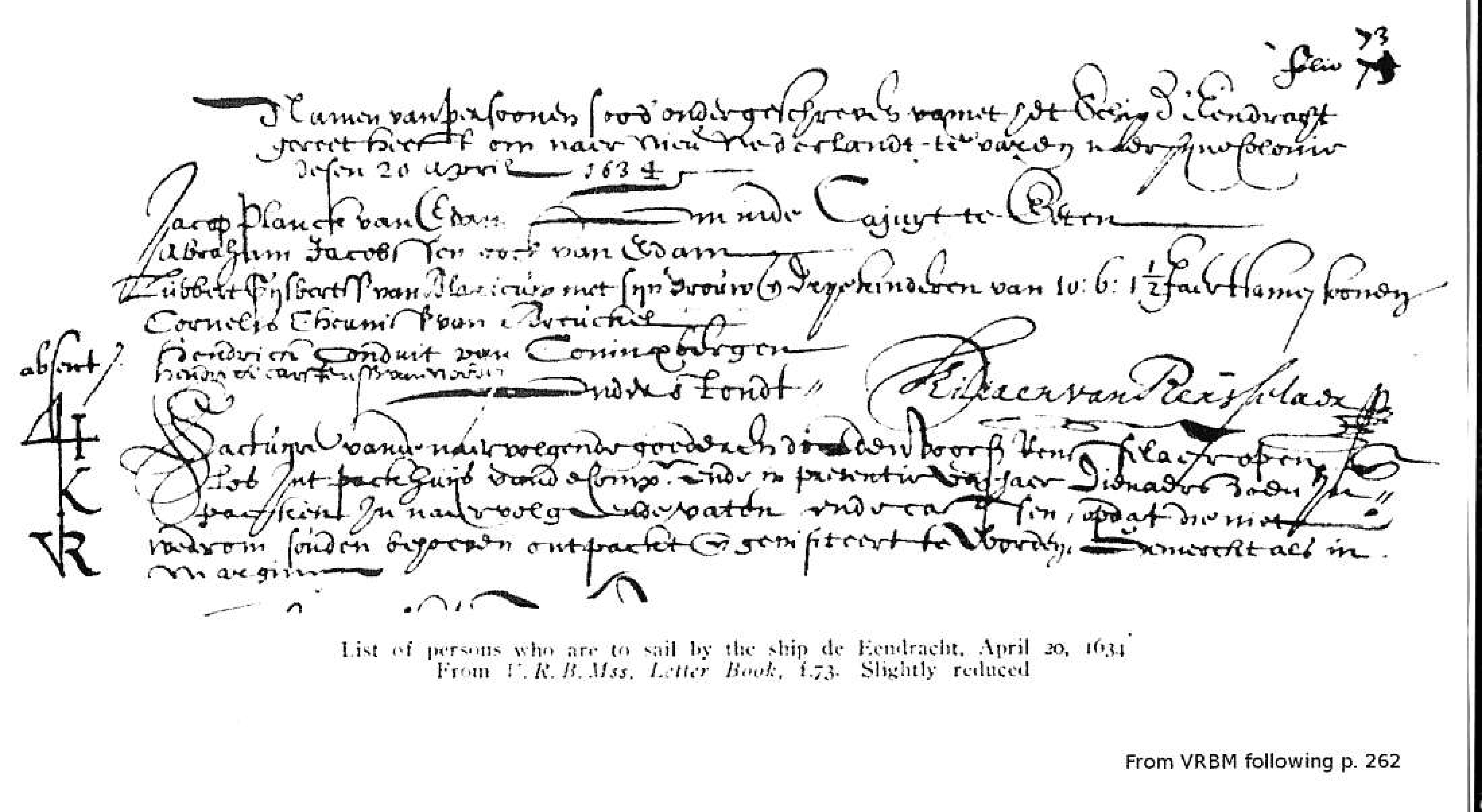Lubbert Gysbertsen Van Blarcom
Birth: 1601 · Blaricum, Noord, NetherlandsDeath: 1655
In today's world a trek across the Atlantic would consist of a couple in-flight movies, a nap, your choice of drinks and snacks, and about 8 hours of spare time. In the 1600s, however, the same trek would take significantly more time and effort. At that time, the ingredients for such a journey included an ocean voyage on a worthy vessel, salted beef, salted pork, salted cod, oatmeal, dried peas, salt, butter, beer, cider and water, and about two and a half months to make it to the desired destination.
Passengers had to travel on ships that featured no bedrooms or sleeping areas forcing tired passengers to sleep on deck. Eventually, the ship's supply of food was contaminated by the numerous rats and roaches who stole their way aboard. Soured biscuits became full of worms and the water was too filthy to drink. Early settlers pressed on, undeterred by the calamity.
Lubbert Gysbertsen, his wife, and his 3 sons were privy to little more when they set sail on de Eendracht (The Unity) in 1634 bound for New Amsterdam,1 in the new land–North America. Including Lubbert and his family, de Eendract was carrying a total of 6 men, 1 woman, and 3 children. The ship took a typical route that traveled down the North Sea and through the English Channel and then docking at the most convenient southern English port to replenish water and provisions.1 The course would then turn south entering the northeast trade winds, past the Madeira and Canary Islands, and would continue into the warmer climates "until the butter melts," as one rule of thumb had it.1 After traveling on or near the Tropic of Cancer, the ships would travel west before the trades. After about a month sailing the trades, the ship turned northwest toward the North American mainland and New Amsterdam. After months of traveling on their treacherous journey, it was land ho!
Lubbert Gysbertsen was born in Blaricum, about 12 English miles southeast of Amsterdam, in the district called Gooiland. By trade, Lubbert was a rademaecker (wheelwright and wagon maker). He was husband to Divertje Cornelis and father of Gysbert, Thys and Jan. Lubbert and his family came to New Netherland on contract with Kiliaen van Rensselaer, the patroon of Rensselaerwyck in New Netherland (on both banks of the Hudson near Fort Orange, now Albany, New York). Upon arrival Lubbert would have a 3-year period to repay expenses to van Rensselaer. During this time, Lubbert could not quit his trade and he could not work for others except through the patroon's agent.1
Early on, the family lived on a farm at Bethlehem, just south of Albany on the west side of the Hudson River. Later, Lubbert was given a Dutch patent for 50 morgens (100 acres) of land on Bergen Neck, now in the Greenville area (just south of Jersey City).1
Lubbert and his wife Divertje Cornelis had seven children; Gysbert Lubbersen, Thys Lubbertsen, Jan Lubbersen, Eybetje Lubberts, Tryntje Lubberts, Gerret Lubbersen, and Hans Lubbersen.
Lubbert would meet his demise some time between December 5, 1654, when his patent was granted, and May 1, 1656, when his widow and son-in-law requested permission to open a tavern.1 It is assumed he was killed during an Indian raid on New Amsterdam sparked by a Native American who was killed for stealing fruit from the orchards. During this time occupants of these lands were driven out of Bergen Neck and into Staten Island, which was also in ruins.
1Zabriskie, George Olin. The Van Blarcom Family of New Jersey. New York Genealogical and Biographical Record, Vol. 99, No.3. New York Genealogical and Biographical Society. July 1968; 141-145.


